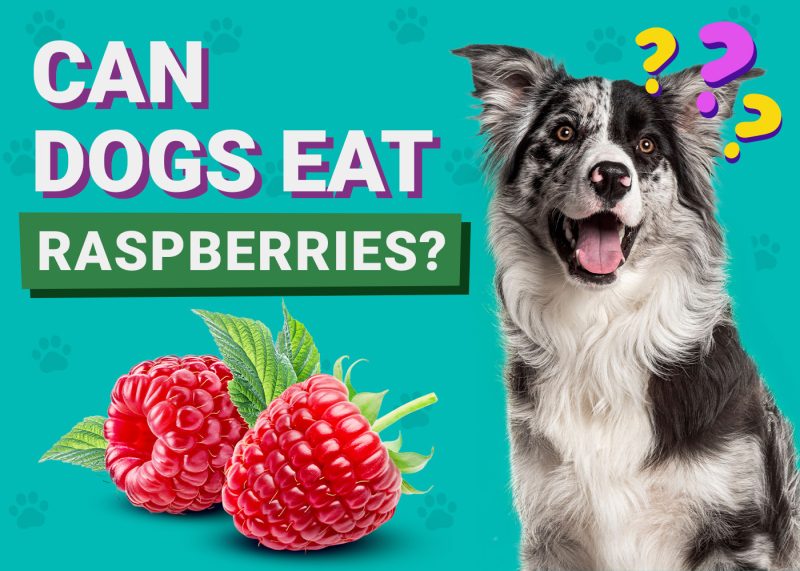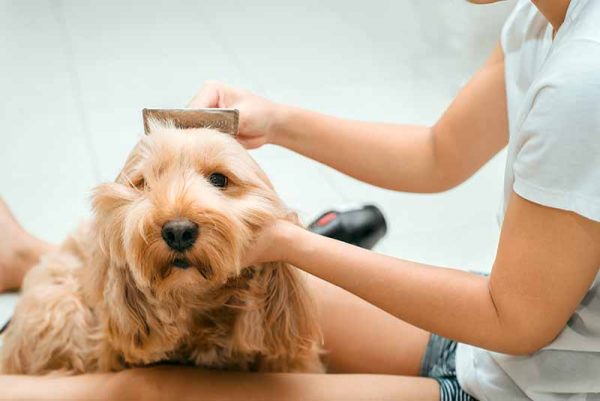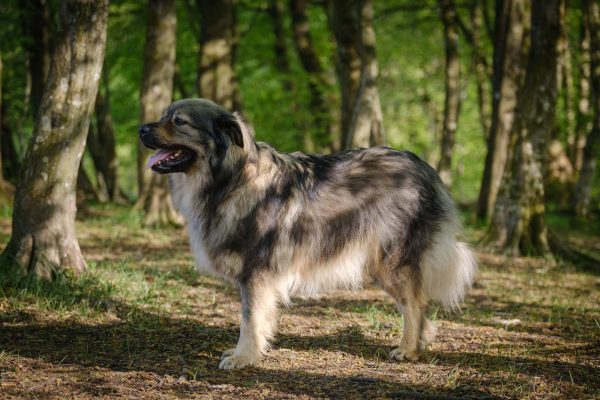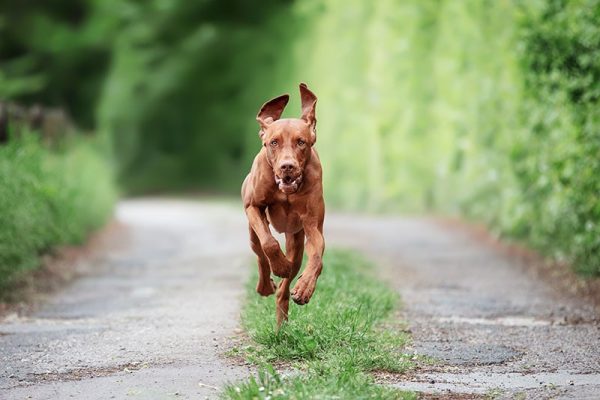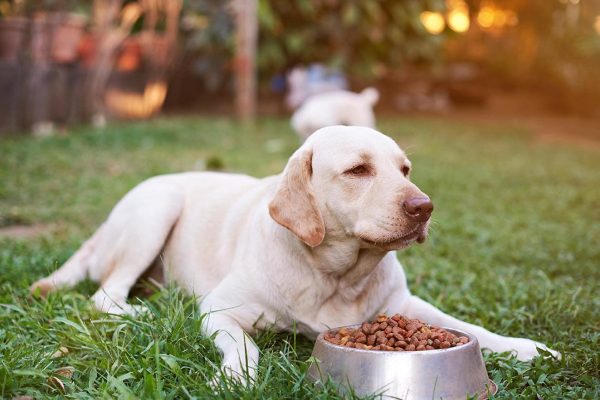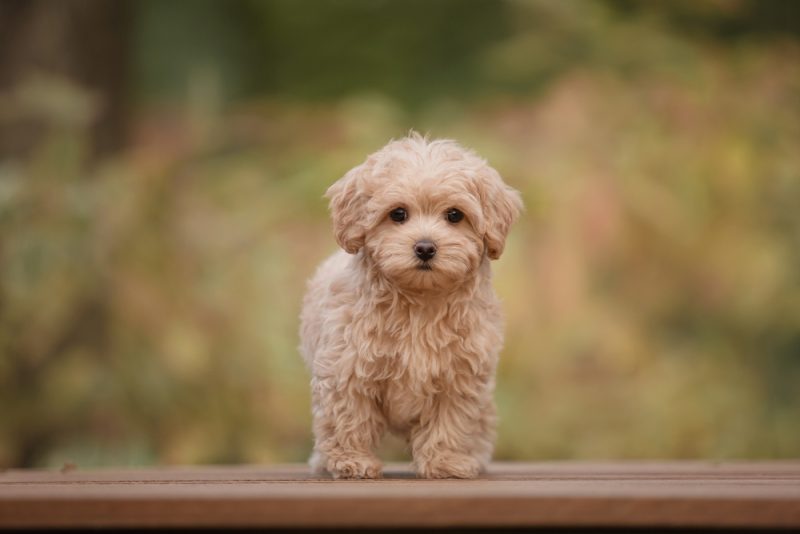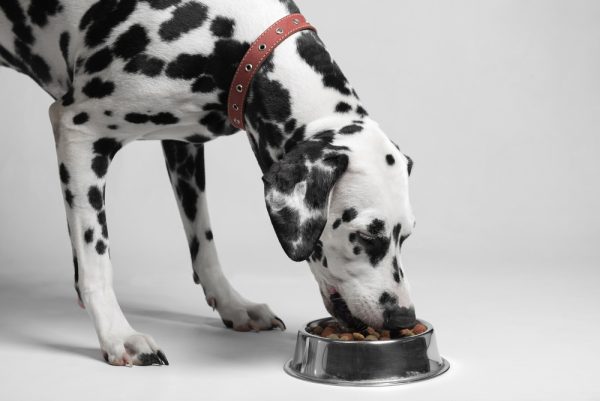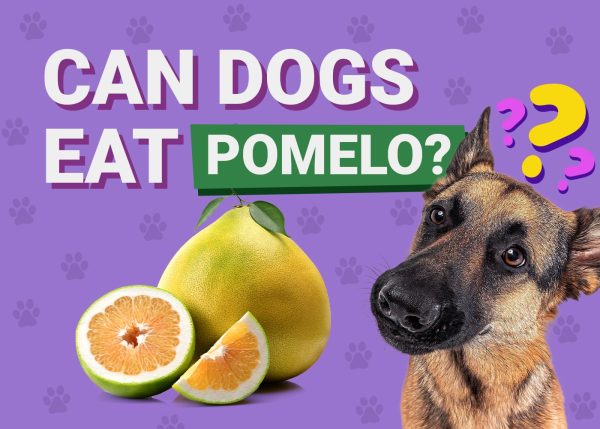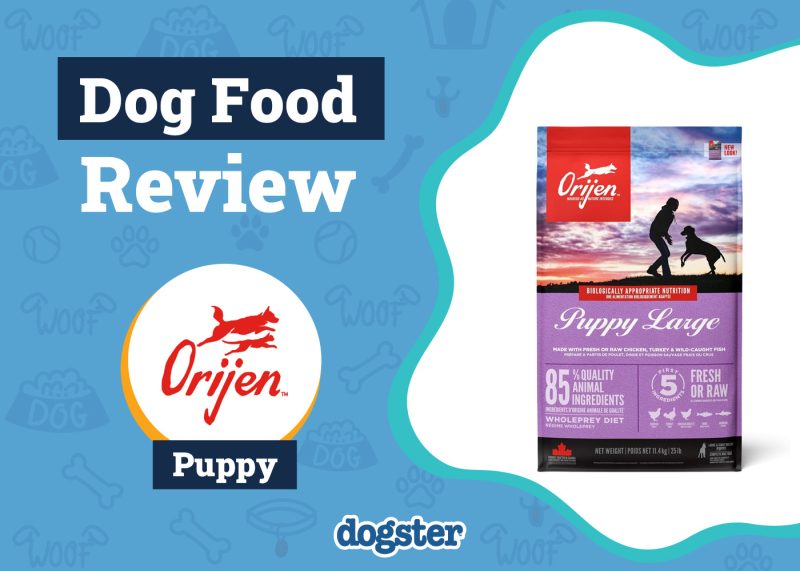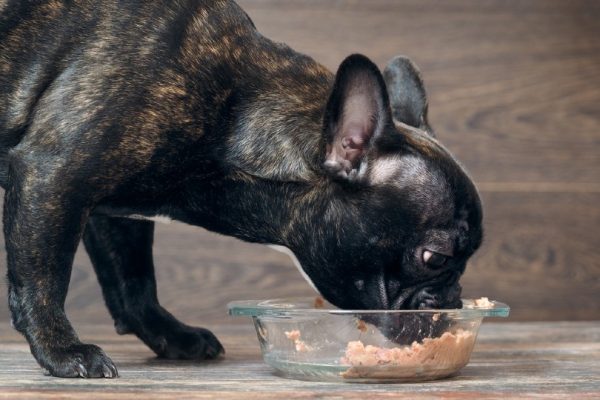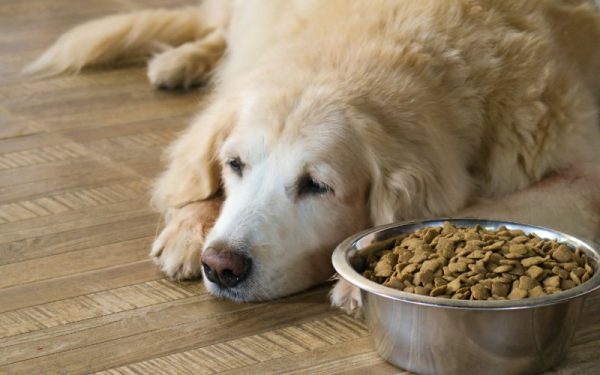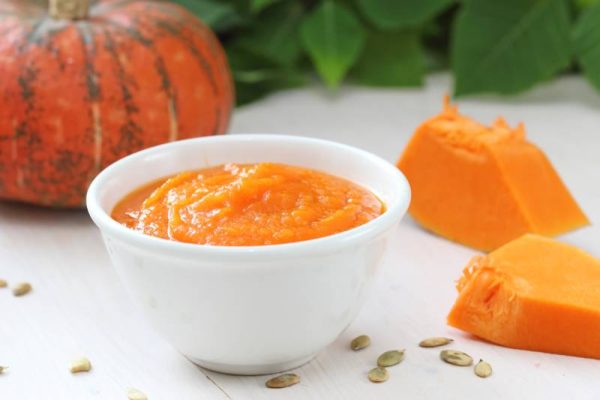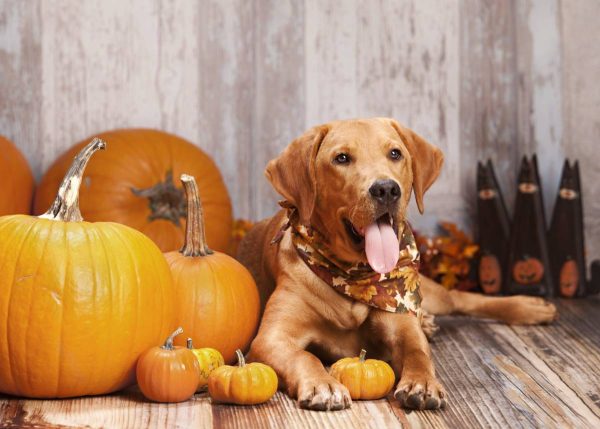In this article
With the summer months looming, it’s normal to want to make your dog more comfortable. Some dogs have their coats clipped shorter, which is fine for some breeds, but shaving entirely is not recommended for any kind of dog—there should always be at least an inch of hair for protection.
That said, double-coated breeds should never be clipped short or shaved for an important reason: Doing so can cause serious damage to the coat and affect its temperature regulation. In this guide, we’ll introduce you to 12 dog breeds that should never go for the chop and explain why this is important.

How Are Double-Coated Dogs Classified?
While some dog breeds, like the Yorkshire Terrier and Greyhound, have single coats, some breeds and mixes have two layers of hair in their coats. A double coat consists of outer hairs—also known as “guard hairs”—and an undercoat, which is much softer in texture.
During shedding seasons (spring and fall), double-coated dogs shed their undercoats to prepare for the upcoming weather conditions. In spring, the coat sheds to become lighter for the summer, and in fall, it sheds again to be replaced by a winter undercoat.
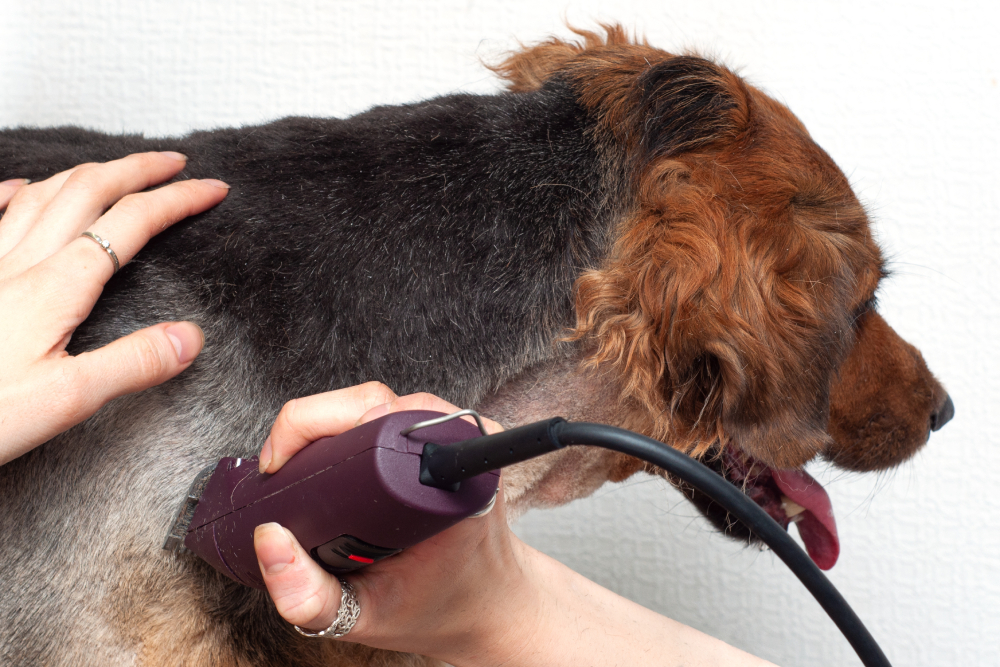
Why Shouldn’t Double-Coated Dogs Be Shaved?
These kinds of coats play an important role in the dog’s thermal regulation, and shaving them upsets that delicate balance. The undercoat keeps the dog warm in winter, and though they shed much of the undercoat for the summer, some of the undercoat stays and catches the air that flows through the coat to help keep the dog cool.
Shaving can also cause permanent coat damage. After shaving the undercoat grows back much more quickly than the guard hairs. This can leave dogs with a wooly, dense coat which is more likely to trap heat. The guard hairs are not present to reflect sunlight, meaning the sun is able to penetrate the dogs skin more quickly. Therefore, although it may seem like you’re being kind by shaving a dog’s thick coat for summer, this can actually end up making them hotter and puts them at risk of sunburn.

The 12 Dog Breeds That Should Not Be Shaved
1. Golden Retriever
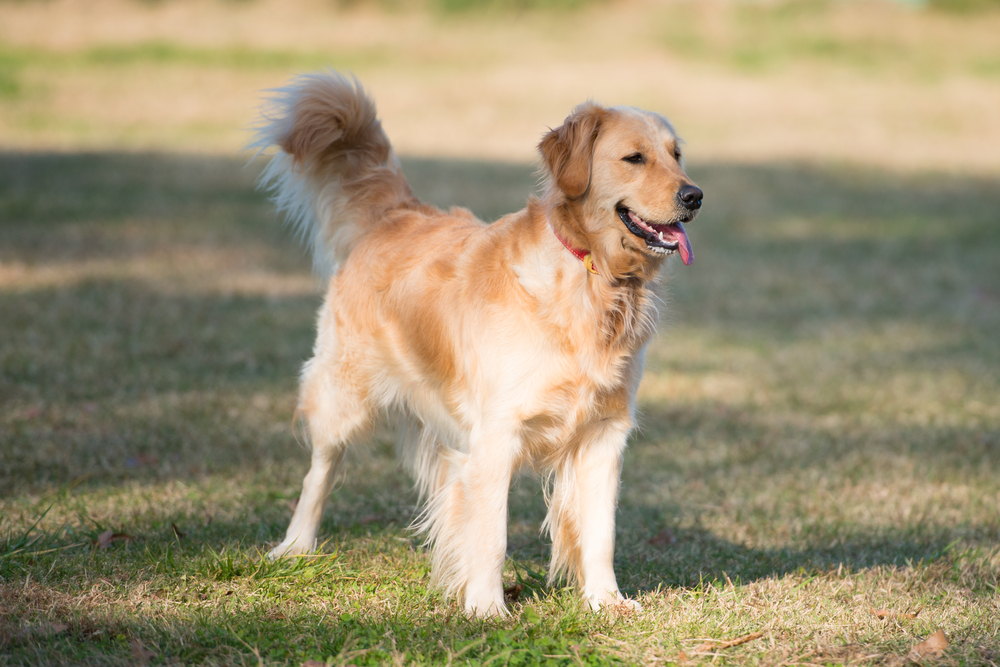
| Origin: | Scotland |
| Coat type: | Double, medium-length |
| Grooming frequency (outside shedding seasons): | Once or twice per week |
The smart and faithful Golden Retriever was originally developed in Scotland as a water retriever. It is for this reason that they have water-repellant double coats and are known for their love of water and swimming. Their medium-length, golden coats shed heavily during shedding seasons and on a moderate basis year-round.
When not shedding heavily—something that can be helped with a good deshedding tool—they only need to be brushed about once or twice per week with a slicker brush to get rid of old hairs and keep them looking dapper.
2. Siberian Husky
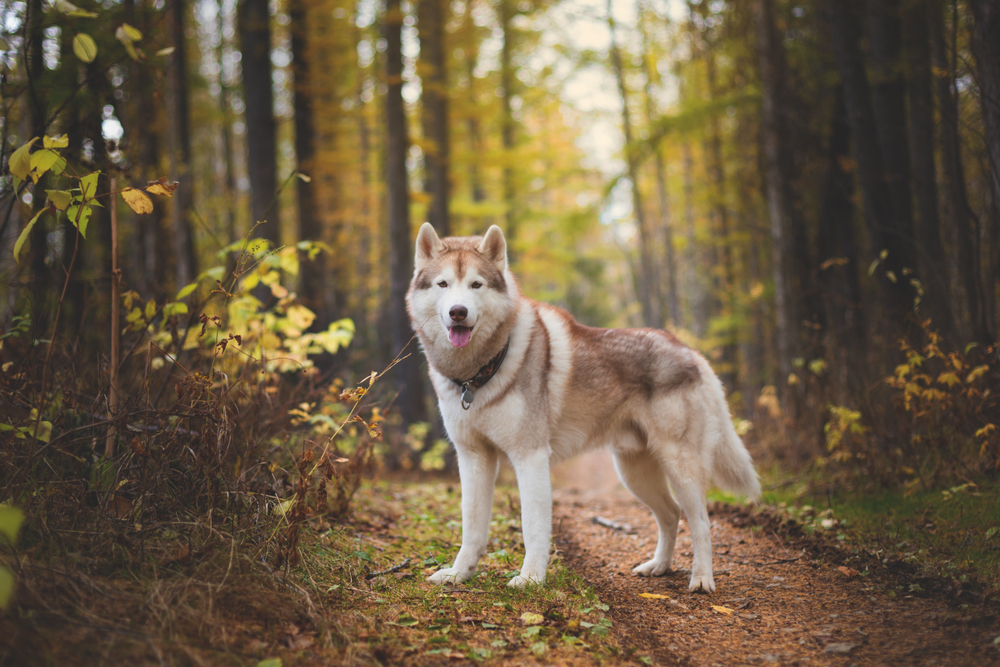
| Origin: | Siberia |
| Coat type: | Double, medium-length |
| Grooming frequency (outside shedding seasons): | Weekly |
The Siberian Huskies of today descend from the sled dogs owned by people from the Chukchi Peninsula. A breed developed for survival in extreme weather conditions, the Siberian Husky’s thick double coat—which comes in a wide variety of color combinations—is well-adapted for the purpose.
Outside of shedding seasons, Siberian Huskies do well with weekly brushing and a bath now and again, as they’re known for being fastidious self-groomers. The AKC recommends cracking out a pin brush and metal comb to tackle the undercoat fallout when shedding seasons hit.
3. Bernese Mountain Dog

| Origin: | Switzerland |
| Coat type: | Double, medium-long |
| Grooming frequency (outside shedding seasons): | Twice weekly |
A steady, calm character, the Bernese Mountain Dog hails from a dairy-producing region in Switzerland. These sturdy dogs worked as general farm hands in all kinds of weather but were also much-loved companion dogs that were gentle and playful with the children of the family.
Bernese Mountain Dogs have medium-long double coats with three colors that shed quite a lot, even outside shedding seasons. Every Bernese parent should equip themselves with a good brush to tackle the long coat, as it can be prone to tangles.
4. Chow Chow
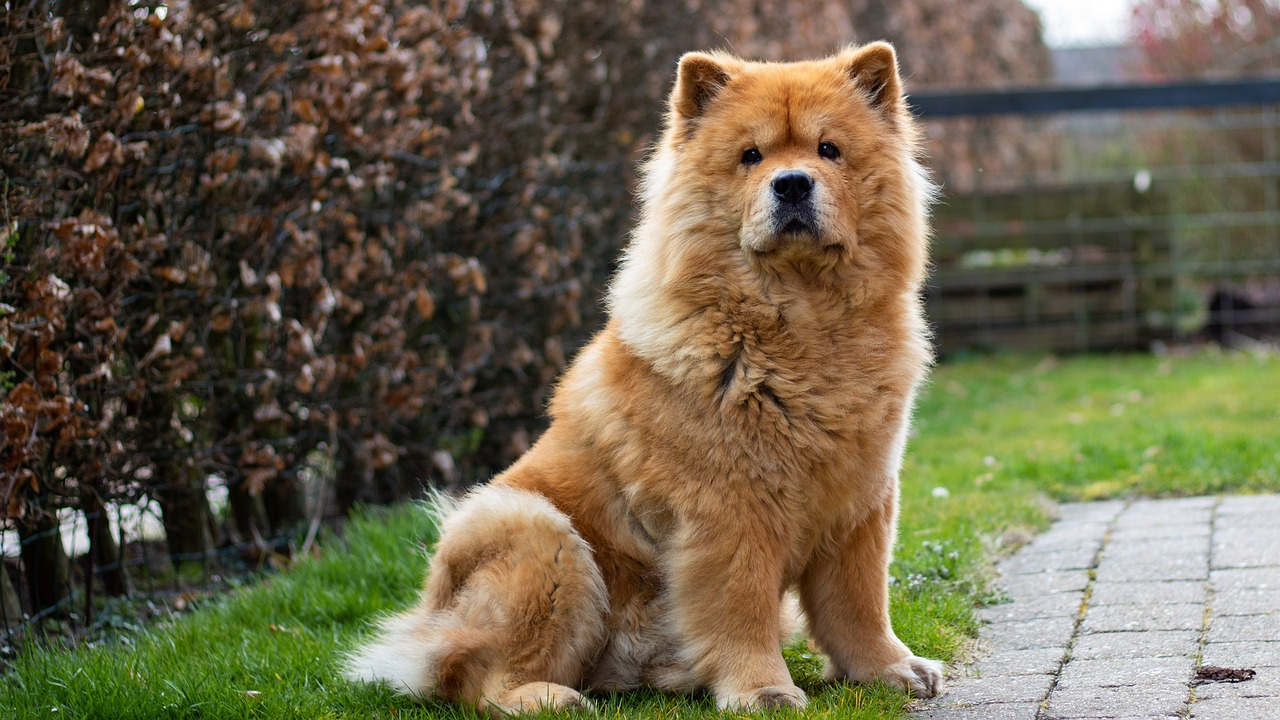
| Origin: | China |
| Coat type: |
Double, medium-length, both rough and smooth
|
| Grooming frequency (outside shedding seasons): | At least twice weekly |
The majestic Chow Chow has origins in ancient China where they were once used as hunting dogs, guardians, haulers, and even as food when times got tough. Like other double-coated breeds, it’s best to keep the scissors away from the Chow Chow’s coats and just stick with proper coat maintenance.
Their profuse, lion-like coat means it’s essential to keep up with a regular grooming routine and check between the skin folds to make sure they’re clean and dry. Pay attention around the head as this area is especially prone to matting.
5. German Shepherd
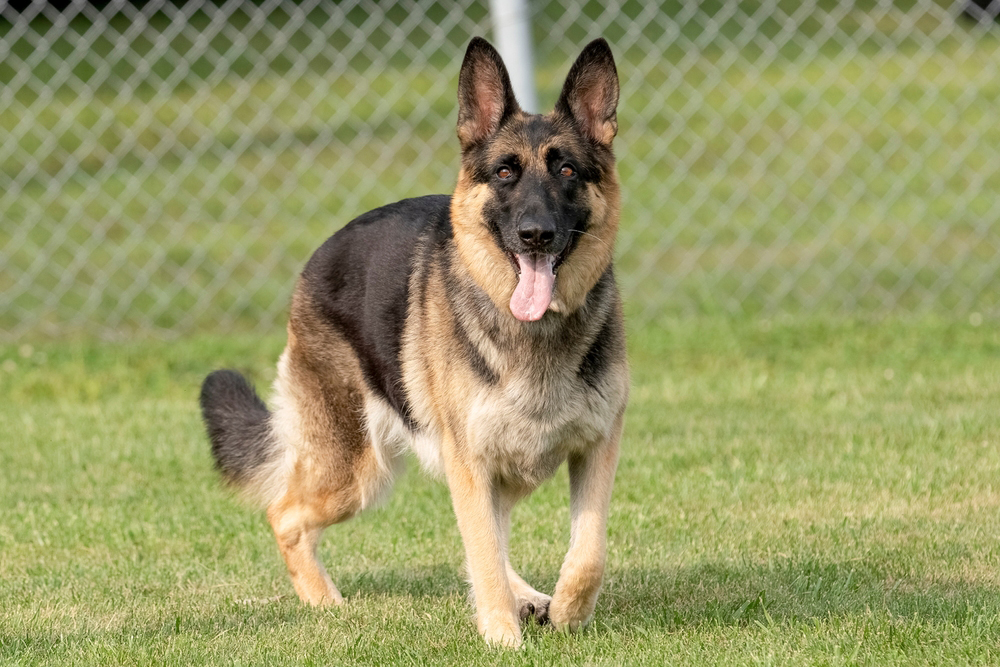
| Origin: | Germany |
| Coat type: | Double, medium-length |
| Grooming frequency (outside shedding seasons): | Every few days |
Though the German Shepherd’s intelligence and versatility have made them a go-to breed for police and military work, they were originally developed as sheep herders. They have a soft undercoat with rough guard hairs, and they come in a surprisingly broad range of colors in addition to the iconic black and tan combination that makes them instantly recognizable.
Outside of shedding seasons, German Shepherds need to be brushed about every few days, but you can expect the amount of shedding to ramp up during spring and fall. As with other double-coated breeds, the most important thing is to maintain the coat well with brushing and de-shedding when necessary, and a healthy diet.
6. Akita
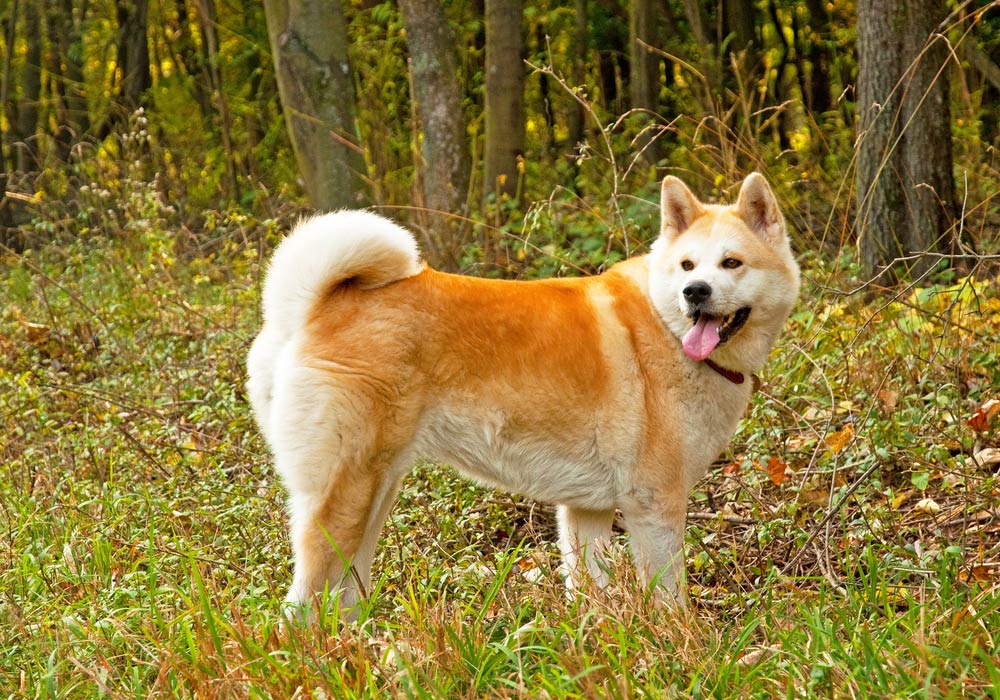
| Origin: | Japan |
| Coat type: | Double, medium-length |
| Grooming frequency (outside shedding seasons): | Weekly |
If there’s a dog that exudes dignity and regality, it’s the Akita. An ancient breed from Japan, the Akita is iconic in his home country, and one of the world’s most famous dogs, the faithful Hachiko, was an Akita. Their double coats should never be clipped short or shaved unless it’s deemed medically necessary by a vet.
Luckily for Akita parents, these dogs are known for typically being very clean and odor-free, and they don’t shed an awful lot outside of shedding seasons. However, during spring and fall, you’re sure to need a good vacuum cleaner and de-shedding tool to keep things under control.
7. Border Collie
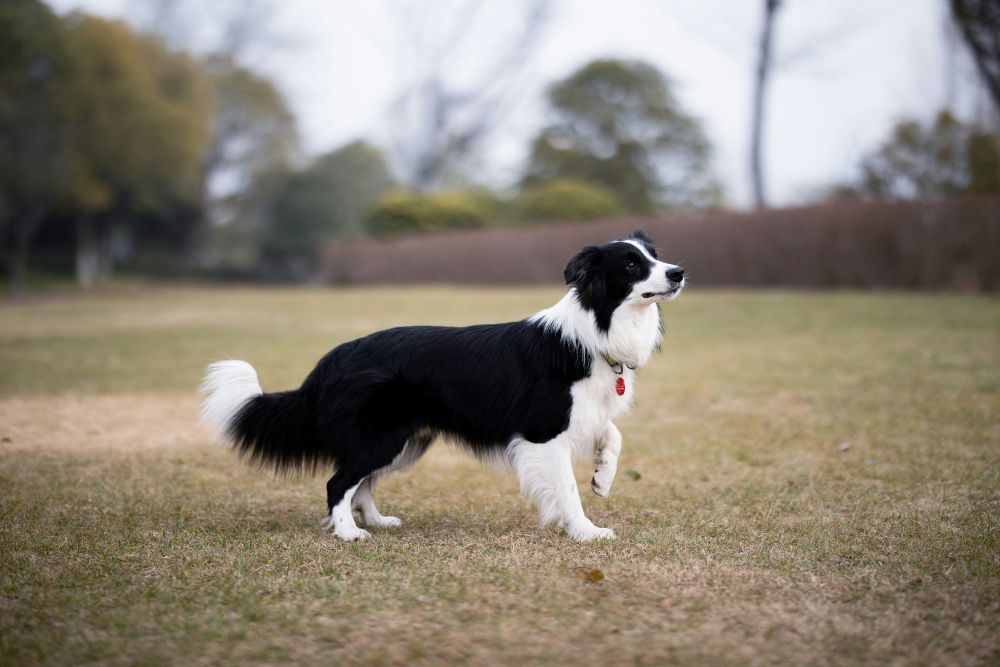
| Origin: | United Kingdom |
| Coat type: |
Double, medium-length & wavy, or short and coarse
|
| Grooming frequency (outside shedding seasons): | One or two times weekly |
Border Collies are whip smart dogs from a herding background, and they date back to Roman times. An interesting fact about Border Collies: There are two possible coat types. While some Border Collies are long and wavy-haired, some have a shorter, rougher coat. Make no mistake, though: both are double coats and should not be shaved.
Your Border Collie will do well with being brushed a couple of times a week, as this helps keep the coat in good condition and removes debris. Another fun fact: Their coats are weather-resistant, and this comes in handy for these outdoorsy, work-oriented dogs.
8. Newfoundland
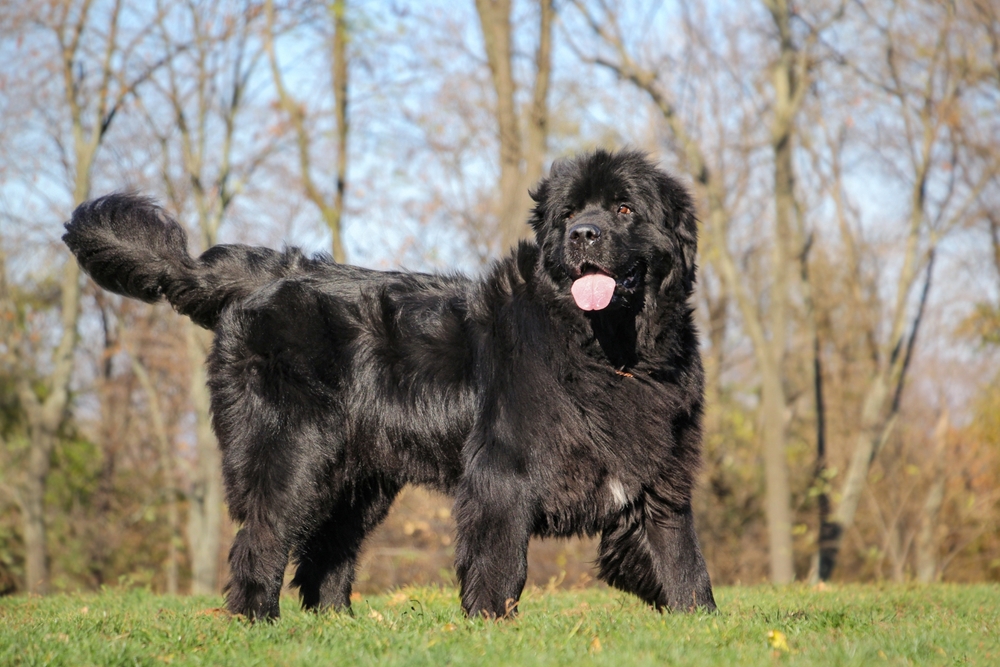
| Origin: | Newfoundland |
| Coat type: | Double, medium-length |
| Grooming frequency (outside shedding seasons): | At least once per week |
The gigantic but sweet-natured Newfoundland—affectionately known as the “Newf”—has a thick, waterproof coat because they were once water rescue dogs and haulers. Outside of the North Atlantic waters, they were put to work as delivery dogs, taking fish to the markets.
Their coats are very heavy and shed profusely twice annually, but for the rest of the year, they shed moderately and need at least once or twice weekly brushing sessions for maintenance. They are at risk of mats, which can be uncomfortable and difficult to manage, but regular brushing helps prevent this.
9. Pomeranian

| Origin: |
Pomerania (Poland and western Germany)
|
| Coat type: | Double, long |
| Grooming frequency (outside shedding seasons): | Every other day |
The Pomeranian is a spitz-type, vivacious little dog in the toy group that was bred for companionship. Pomeranians may be tiny, but their personalities and their coats are certainly not. Their long, lion-like coats need to be brushed often even outside during shedding seasons to keep them spick and span and prevent knots and mats.
These dogs descend from Arctic spitz-type dogs, so it’s no surprise that they have a double coat just like their ancestor, the German Spitz. Expect lots of clumps to be tumbling around during shedding seasons and get ready to tackle them with a de-shedding tool, but never shave your Pom.
10. Samoyed
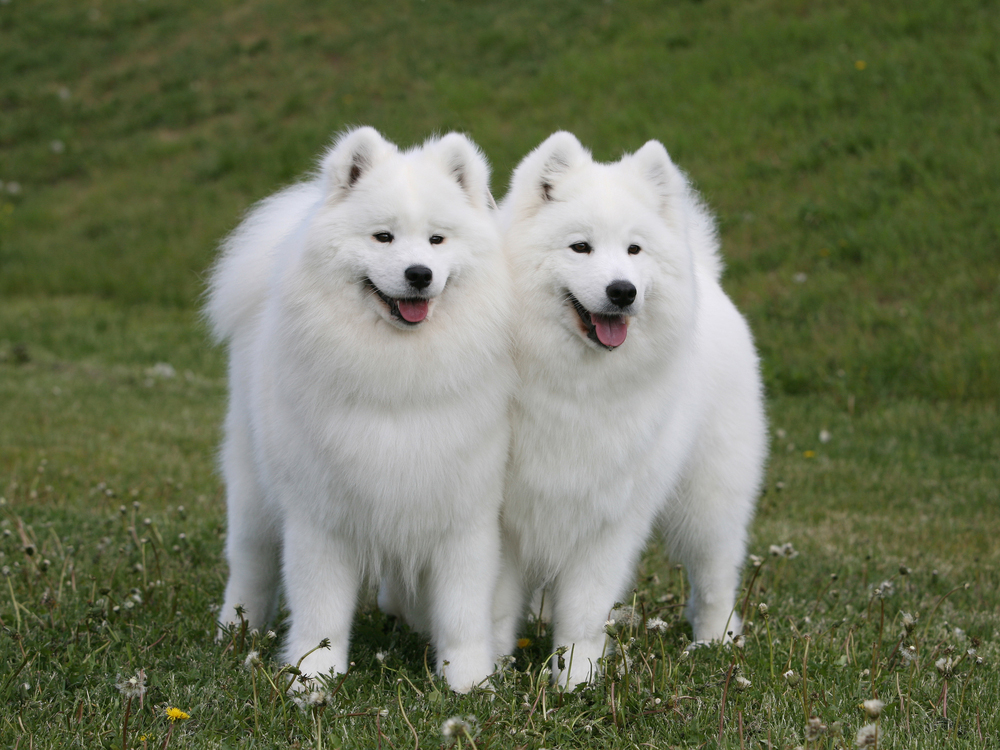
| Origin: | Siberia |
| Coat type: | Double, long |
| Grooming frequency (outside shedding seasons): | Daily |
The friendly Samoyed’s appearance reflects where he was originally developed: snowy Siberia. These dogs’ role was to pull sleds for the Samoyede people of Siberia and keep them warm in the plummeting night temperatures. The long double coat is rough on the outside, but soft and dense closer to the skin, where the undercoat is.
Samoyeds do best with daily brushing sessions because they’re pretty heavy shedders year-round, and even more so when spring and fall roll around. If not daily, aim for every few days at least to keep the coat nice and smooth. Again, shaving is a huge no-no for this smiley dog breed.
11. Labrador Retriever
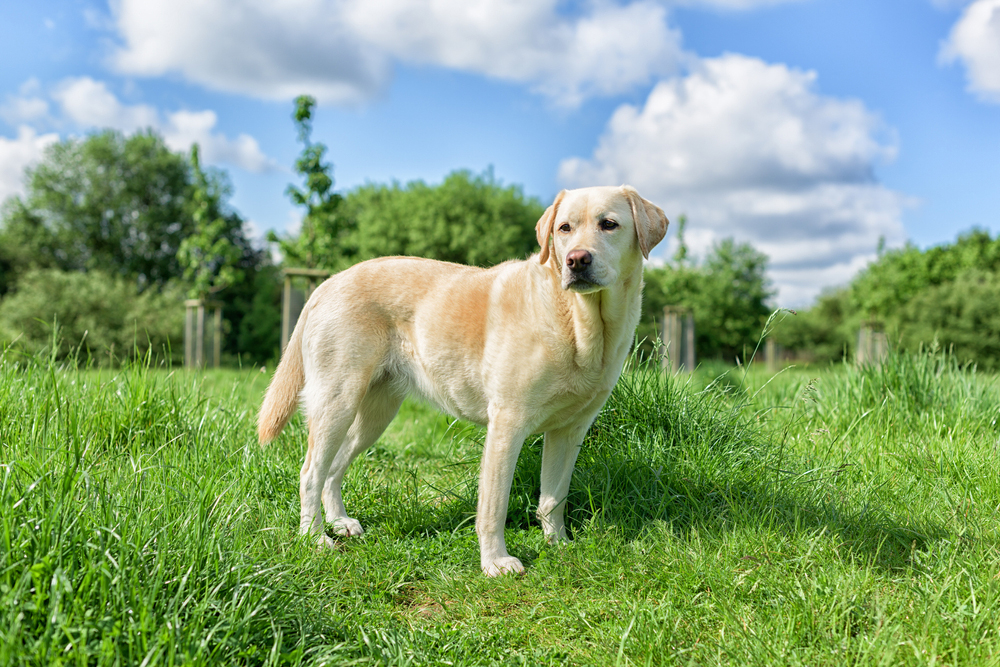
| Origin: | Newfoundland, United Kingdom |
| Coat type: | Double, short |
| Grooming frequency (outside shedding seasons): | Weekly |
Labradors descend from dogs from Newfoundland, Canada, but their development occurred in the U.K. It may surprise some to learn that Labradors are double-coated because the hairs are short, but their original role was to work with Canadian fishermen, so their short, water-repellant double-coats were perfect for navigating the cold waters and preventing ice buildup.
These dogs shed a lot year-round and need baths now and again depending on how dirty they get. Twice per year, you’ll see even more hair around than usual, so brushing frequency will likely need to be amped up from weekly to daily.
If you are looking for the perfect, pet-friendly shampoo and conditioner combo, we highly recommend the products by Hepper. With a soothing oatmeal shampoo, free of soaps and other harsh chemicals, and a cucumber and aloe scented conditioner, your pet's skin and coat will be smooth, hydrated, and irritation-free. At Dogster, we’ve admired Hepper for many years, and decided to take a controlling ownership interest so that we could benefit from the outstanding products of this cool pet company!
Image
Product
Details
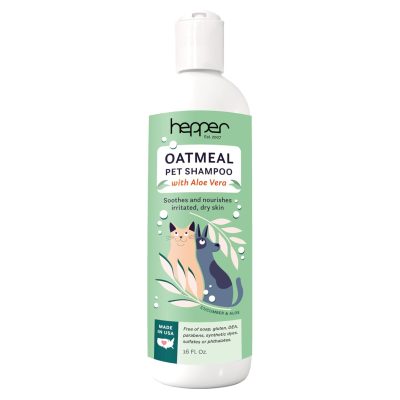
Hepper Oatmeal Pet Shampoo
Check Price
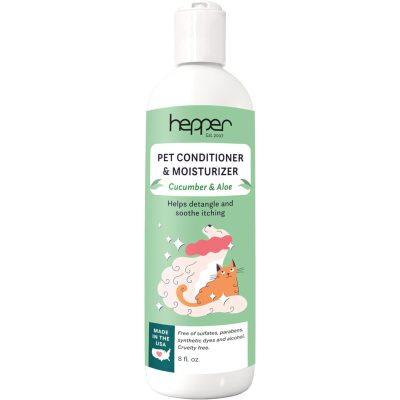
Hepper Pet Conditioner
Check Price
12. Australian Shepherd
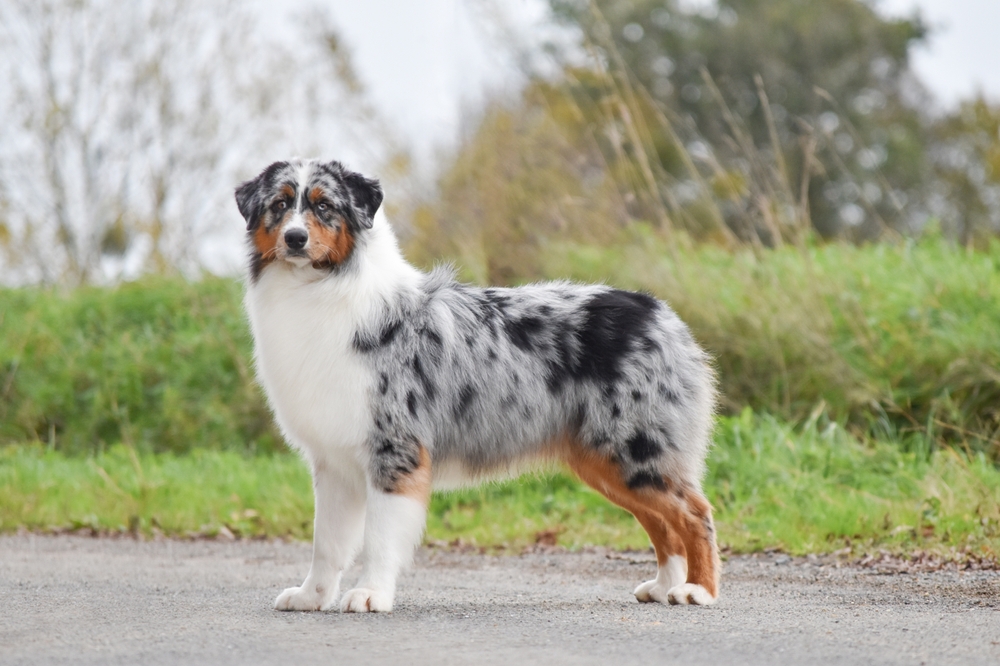
| Origin: | United States |
| Coat type: | Double, medium-length |
| Grooming frequency (outside shedding seasons): | Weekly |
The Australian Shepherd is an incredibly popular breed because these dogs are so smart, trainable, and exuberant, but they’re not for everyone due to their tireless energy. The breed is thought to originate from the Basque region of Spain but was developed in the U.S.
Like many herders, the Australian Shepherd has a thick, waterproof coat that sheds, especially in spring and fall. As a rule, you can get away with brushing them weekly but shedding seasons require de-shedding every other day. Shaving is not a good idea for this breed, as is the case with other double-coated dogs.

Frequently Asked Questions
Can Any Dogs Be Shaved?
As we touched on earlier, certain single-coated dog breeds—like Poodles and the Havanese—can have their coats clipped shorter by a groomer, though shaving right down to the skin isn’t a good idea for any breed. At least an inch should remain to protect against the sun. Speak to a reputable groomer to find out what kind of cut—if any—would be suitable for your dog.
How Can I Keep My Dog Cool in Summer?
In summer, it’s essential to take special care to ensure your dog doesn’t end up with heatstroke or sunburn.
- Don’t walk your dog during the hottest parts of the day to prevent burnt paws, sunburn, and heatstroke.
- Provide plenty of cool water. Adding ice cubes is a good idea.
- Offer a cooling mat for dogs.
- DIY dog-friendly ice treats.
- Keep your dog in shady spots if you spend time out in the yard, and don’t allow them to play or roam in the hot sun.
- Some dogs enjoy taking a dip in paddling pools filled with cool water and kept in the shade.
- Put a fan where your dog spends a lot of time.
- Never leave a dog in the car.
- Avoid overexerting your dog.
What If My Dog Has Heatstroke?
If your dog shows signs of heatstroke, call a vet straight away. Meanwhile, move the dog to a cool spot and onto a cooling mat, cool wet towel, or by a fan.
Gently pour cool (not cold or icy—this can cause shock) water over the ears, head, and feet, then pour it over the rest of the body. Watch that the dog doesn’t start to shiver. Offer a little water to drink and avoid putting a wet towel over the dog—this can make things worse. Follow your vet’s instructions once you’ve got them on the phone.
If you need to speak with a vet but can't get to one, head over to PangoVet. It's our online service where you can talk to a vet online and get the advice you need for your dog — all at an affordable price!

Conclusion
The dogs we’ve discussed in this list are just a few examples of breeds that shouldn’t have their coats clipped short or shaved—there are plenty more.
If you’re not sure if it’s okay for your dog to get a haircut, research the type of coat your dog has and communicate with your vet or a professional, reputable groomer. A good groomer would never clip or shave a breed that could be put at risk by this.
Finally, in some cases, a vet may recommend shaving for welfare or medical reasons, like if a dog is covered in painful mats, needs surgery, or has a skin infection.
Featured Image Credit: Kozak_studio, Shutterstock


